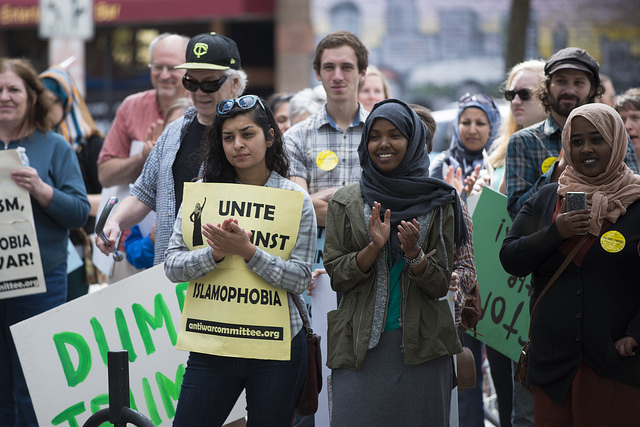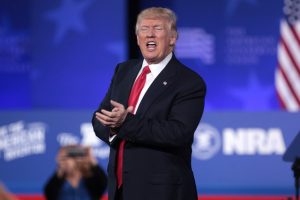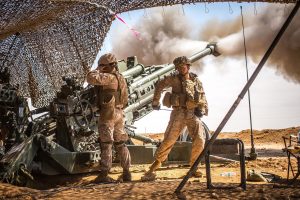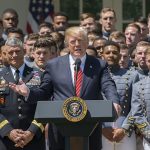by Derek Davison
The frequency of anti-Muslim behavior in the United States is increasing at an alarming rate. A study released earlier this year by California State University-San Bernardino’s Center for the Study of Hate and Extremism found that incidents of anti-Muslim and anti-Arab violence in the United States increased drastically from 2014 to 2015, by 78.2% and 219% respectively, reaching levels that haven’t been seen since the immediate aftermath of the September 11, 2001 terrorist attacks. The Council on Arab-Islamic Relations (CAIR) found that 2015 saw the highest number of attacks directed against mosques in any year since it began tracking such incidents in 2009. So far in 2016, the Huffington Post’s “Islamophobia tracker” has catalogued 289 anti-Muslim acts, which includes both violent and non-violent incidents.
The recent wave of Islamophobic incidents can’t be tied to a single large event like the September 11 attacks—though fears over events in the Middle East and terrorist attacks in Western cities like Paris, Brussels, San Bernardino, and Orlando have undoubtedly had something to do with it. Rather, the driving force behind Islamophobia of late seems to be anxiety over the very presence of Muslims in Western society, rather than animosity toward a particular group or anger over a particular act.
Speaking to an audience at the Atlantic Council on October 20, Johns Hopkins University’s Vali Nasr argued that this kind of Islamophobia is tied to populist fears over immigration and globalization, and said that “the challenge for Muslims is now much, much bigger [than it was after 9/11], because this is not about defending activities that are happening ‘over there.’ It’s really about defending their place in American society and European society going forward.”
Fallout from the 2016 Election?
This uptick in anti-Muslim activity seems to correlate with the onset of the 2016 campaign cycle. A study released in May by Georgetown University’s Bridge Initiative found that incidents of anti-Muslim violence began increasing in March 2015, which roughly coincided with the start of the primary campaign process. That study noted the degree to which anti-Islamic and anti-Muslim rhetoric played a role in the Republican primary in general, and focused on one candidate in particular: former reality TV star and current Republican nominee Donald Trump. As the Bridge Initiative study noted, Trump’s candidacy has combined a high level of Islamophobic rhetoric with a degree of free media coverage almost unprecedented in modern American politics, enabling his message to reach millions of people both in the U.S. and overseas. In a number of anti-Muslim incidents, the attackers have identified themselves as Trump supporters.
A series of surveys of American attitudes toward Muslims and Islam, authored by University of Maryland scholar Shibley Telhami and discussed at a Center for International and Security Studies at Maryland also held on October 20, seems to bolster the idea of a connection between the Trump campaign, and Republican Party politics in general, and the increase in Islamophobia in the U.S. The three surveys, taken in November 2015, May 2016, and June 2016 (shortly after the Orlando nightclub shooting) actually showed an overall increase in favorable American attitudes toward Muslims (from 53% to 58% to 62%) and favorable attitudes toward Islam (from 37% to 42% to 44%), even after the Orlando attack. But that shift was entirely driven by self-identified Democratic and independent voters. Self-identified Republicans, and particularly Trump supporters, saw their mostly negative views of Muslims and Islam remain constant or even grow slightly more negative.
In Telhami’s view, “American political polarization” explains much of the overall softening of American attitudes toward Muslims and Islam. Trump’s campaign became so closely identified with an anti-Muslim and anti-Islam worldview that anyone opposing Trump would have been inclined to adopt the opposite view. If Trump’s Islamophobia has been potent enough to create such a considerable backlash, it also likely inspired his supporters to strengthen their own anti-Islam attitudes.
Europe Is Not Immune
The growth of Islamophobia is not unique to America, and it has coincided with a rise of right-wing populist movements all over the Western world, from Trump in the U.S. to the U.K. Independence Party in Britain to Marine le Pen’s National Front party in France. At the Atlantic Council, activist Zainab Salbi talked about the toll this has taken on Muslim communities in Europe. “In France, Muslims are scared to say ‘I pray. Muslims are afraid to say ‘I don’t eat pork,’ because [people will] assume they’re radicalized,” he said.
“They’re right to be afraid,” responded author and co-panelist Karen Armstrong, “because if you look at history, when these phobias blow up, they’re often followed by appalling actions.”
Salbi believes that the fear created by Islamophobia is being borne more heavily by Muslim women:
In the Western world, the ones who are suffering the most, in my opinion, are women who are wearing headscarves because they are physically different. People assume Muslim women are oppressed—the headscarf is a physical reminder of difference—but what they are doing is oppressing these very women by prejudice and acts of violence.
Long-Term Reasons for Optimism
Nasr told the audience at the Atlantic Council that, as he sees it, there is little to be done to slow the rise of Islamophobia, at least in the near term. He argued that Islamophobia in the U.S. has become dissociated from terrorism and is now rooted in “some nasty, big forces that are going through American politics and society. We’re part of the immigration problem, we’re part of the culture war…I don’t think Muslims saw this coming, and they don’t have easy strategies for disentangling themselves from the populist wave that is sweeping across Europe and the U.S.”
In the long-term, he said that “the solution really rests in the young Muslim population in the West” and their engagement with their peers. But the uphill battle for acceptance is taking its toll on those young Muslims, as Salbi described:
I just interviewed families in France whose sons have been recruited by ISIS, French Muslims. And when [one family was] talking over Skype with their son, who is in ISIS territory, and saying ‘come back to France’…these are fourth-generation Muslims—the grandfather fought in World War II against the Nazis, with the French army. And the son [talked about] all the times in which he has been discriminated against based on his color and his name—in the mall people thought he was stealing, in school all the bullying, all the things that he has gone through—and he said ‘What’s the point? No matter what I do, how much I try to prove that I am French, they are never accepting me for who I am.’
However, there are things that can be done to try to improve the situation. Salbi cited a Methodist church in Minnesota hosting interfaith dialogues and Muslim communities that are “opening and demystifying” mosques as examples of positive community interactions that could reduce fears about Islam and Muslims. Mehmet Aydin, a former Turkish minister of state who also spoke at the Atlantic Council event, called for “intercultural education” to alleviate Islamophobic attitudes that stem from “ignorance” and develop “respect for the values of other cultures.”
In discussing his survey findings, Telhami—echoing Nasr’s short-term pessimism—cautioned that some backsliding on American attitudes toward Muslims and Islam should be expected, once the campaign is over and Trump is no longer a factor. But he, like Nasr, also suggested that there is reason for optimism around young people, who tend to be much less Islamophobic than older Americans.
Sahar Khamis, a University of Maryland professor who participated in the discussion of Telhami’s findings, was even able to find a “silver lining” in the rise of Islamophobia, in the form of greater Muslim-American civic participation. American Muslims have begun speaking out online, she said, and we’re also seeing an “increased degree of Muslim political engagement.” She added,
American Muslims have not been as engaged in the political process as they should have been, but this year is very different. Almost every mosque and every Islamic center has centers for registering Muslim voters, and they’re taking it very seriously to go to the polls and cast their vote, because they feel it is a matter of a very serious election that can have very dangerous impacts on themselves and their families.
Photo: Protesters against Islamophobia in Minneapolis in September 2016 courtesy of Fibonacci Blue via Flickr.






Americans seem to have a need to have an enemy. Native Americans first, then slaves who dared to want freedom, then communists, Chinese, Japanese…….Blame somebody else-you could not possibly be at fault. Even now, as well as Muslims, why is there such enmity towards Russia from both sides of the political spectrum (Trump is demonized to mentioning some reduction in this behavior) despite the Russians no longer being the Communist Menace trying to take over the world.